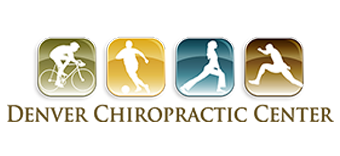Last month, we discussed three types of headaches: Tension Headache (the most common), Cluster Headaches (a vascular headache – less common, short duration but REALLY painful), and Sinus Headaches. Migraine headaches were discussed the month before last. In keeping with the theme, ONE more headache type will be discussed: Rebound Headaches, followed by anti-inflammatory herbal remedies, and finally, “Headache Triggers.”
Rebound headaches are the result of pain killer overuse. Of course, one would think of pain killers like aspirin, acetaminophen (Tylenol), or ibuprofen (Advil, Motrin, Nuprin, etc.) as well as many prescription drugs as being “friendly” and commonly reached for when a headache or any other ache or pain occurs. But, as the old saying goes, “…too much of a good thing can be bad!” These culprits, instead of helping, can actually hurt you! One theory for the cause of rebound headaches is that too much of these meds can cause the brain to shift into an excited state that triggers the headache. Another theory is that these headaches result from too sudden of a drop of the medicine in the bloodstream, which would only occur if the medication was being taken at a high dose for a relatively long period of time. According to the Migraine Research Foundation, EVERY 10 SECONDS, someone in the United States goes to the emergency room with a migraine or headache due to the intense pain, severe nausea or dehydration, drug interactions, or side effects from headache medications! DON’T BE ONE OF THEM!!!
As mentioned last month, PLEASE FIRST try an anti-inflammatory herb like ginger (Zingiber officinale), turmeric (Curcuma longa), Feverfew, passionflower (Passiflora alata), Peppermint (menthe piperita), ginko (ginko biloba), caffeine (Coffea Arabica), black or green tea, Valerian (Valeriana officinalis), Coriander Seed (Coriandrum sativum), Dong Quai (Angelica sinensis), Lavender Oil (Lavandula angustifolia), Rosemary (Rosmarinus officinalis), Lime or Linden (Tilia spp.), horseradish (Armoracia rusticana), honeysuckle (Lonicera japonica), and more!
So what triggers headaches? Here are a few of the more commonly researched triggers: weight [in females, a BMI of 30 (mild obesity) = 35% greater risk, and BMI of 40 (“severe obesity”) = 80%]; personality (traits such as rigidity, reserve, and obsessivity); “let-down” or weekend headaches (breaking your routine, like staying in bed until noon); odors and fumes (e.g., fresh paint); dehydration (drink water AND eat fruits / veggies to get more water); skipping meals (hunger is a common trigger); physical exertion (certain sports like running, weight lifting); too much caffeine (small amounts help, but too much can trigger headaches); inactivity (sedentary lifestyles trigger – 30 min./day cardio, 5x/week is ideal); sleep deprivation (those averaging six hours have more frequent & severe headaches); and certain foods like red wine, beer, MSG, chocolate, aged cheese, sauerkraut, and processed meats like pepperoni, ham, and salami. Foods that can reduce headaches include those high in magnesium– spinach, tofu, oat bran, barely, fish oil, olive oil, white beans, sunflower, and pumpkin seeds.
In addition to GOOD CHIROPRACTIC CARE, and Active Release Techniques headache management requires a multidimensional approach for best results!
We realize you have a choice in whom you consider for your health care and we sincerely appreciate your trust in choosing Denver Chiropractic Center service for those needs. If you, a friend, or family member requires care for headaches, we would be honored to render our services.
